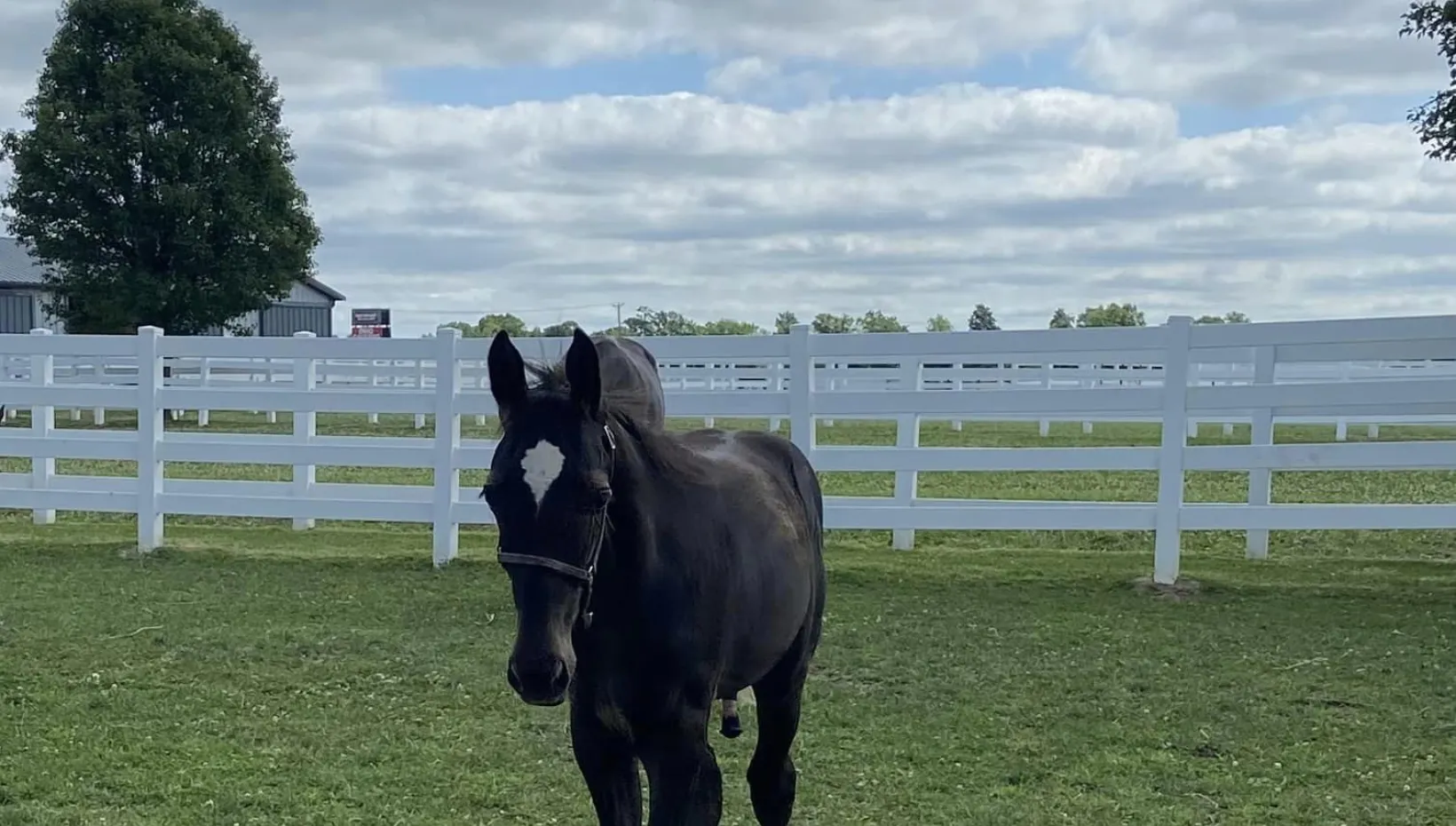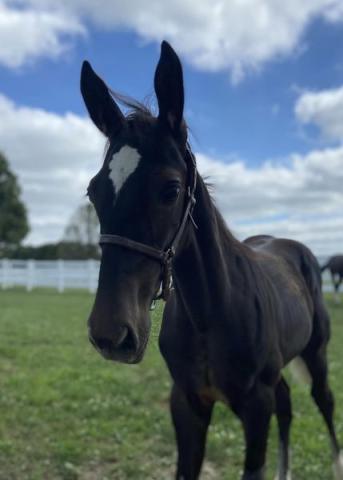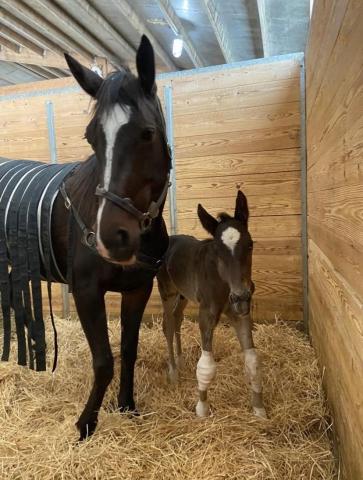Swift action saves mare and foal

Article by: Lisa Lopez-Snyder
Originally Published

In early July 2023, Al Menke, farm manager of Steiner Stock Farm in Lima, Ohio, brought Sweet Chrome, a seven-year-old standardbred mare with complex dystocia (a difficult or complicated birth process) to the Galbreath Equine Center Emergency and Critical Care Service at The Ohio State University Veterinary Medical Center (VMC).
Menke says his farm team spent thirty minutes trying to extract the foal when he realized it was time to get the mare and foal to Ohio State.
“Horses generally have a short window of time to deliver,” says Laura Dunbar Hostnik, DVM, MS, DACVIM, associate professor of equine internal medicine. “Stage II labor is about 22 minutes, and when that’s prolonged, that can compromise the foal, and they often don’t survive.” Fortunately, she says, Menke had called the VMC ahead of time and said the foal was still alive. “That was a good sign, so we were prepared,” she says.
When a dystocia call like this one comes in, she says, the entire Galbreath Equine Center team is alerted.
The theriogenology team palpated and assessed the position of the foal and first tried to extract it. The internal medicine team, including Hostnik and Teresa Burns, DVM, PhD, DACVIM, associate professor of equine internal medicine and Bud and Marilyn Jenne designated professor in equine clinical sciences and research, also assessed — and later, Burns resuscitated — the delivered foal. The equine surgery team prepared to perform a C-section if needed. The anesthesia team immediately administered anesthesia for the assessment and delivery. All the respective faculty, residents, technicians, assistants and students were on hand to assist.
In Chrome’s case, the farm manager told the team to do whatever was necessary to save the mare and foal, including a C-section. Erin Runcan, DVM, DACT, associate professor of theriogenology and reproductive medicine, assessed Chrome when she arrived. When she discovered the foal was large and that its knees were contracted, she determined the delivery should be C-section.

Caitlin Moreno, DVM, MS, assistant professor of equine surgery, performed the C-section, extracted the foal and placed him on a cart for the medical team’s assessment. Internal Medicine performed an APGAR (appearance, pulse, grimace, activity and respiration) score on the limp foal and immediately started resuscitation. At the same time, internal medicine team members stimulated the foal, rubbing him with towels to eliminate the mucus membrane fluid; Hostnik began CPR and intubated him, with a student ready to apply assisted breathing.
Meanwhile, Hostnik inserted a catheter to start medication and students and assistants kept track of the medication time and dosage. The team gave the foal two doses of epinephrine, two minutes apart. The foal began to breathe on his own and was placed in the ICU with oxygen. He was treated for umbilical infection, wounds from the splints on his legs and elevated kidney values.
After 16 days of hospitalization, the foal returned to the Steiner Stock Farm, where he continued with follow-up care from his local veterinarian.
The Steiner Stock Farm named the foal Forrest — after Forrest Gump, the film character — because of the leg splints and his resilience, says Menke. “We kept him in the stable until mid-July and then were able to let him roam the field.”
The Galbreath Equine Center teams’ preparation is critical in severe dystocia cases like these, Hostnik says. In fact, she says, the team organizes preplanning scenarios for dystocia cases at the end of each year before the delivery season begins. “We have two or three meetings to go over the protocols.”
For Menke, this preparation has made all the difference in Forrest’s health. “We’re happy with the Galbreath Equine Center team’s work and couldn’t be happier to have Forrest here on the farm.”
The dedication to ensuring that every dystocia case at Ohio State’s Galbreath Equine Center receives exceptional care exemplifies the Veterinary Health System’s ambition to Be The Model® referral veterinary medical center of choice.